■ Hammond Organ: The Iconic Name in Organs
In this edition of "Keyboard Fanatic Chronicles," the focus is once again on organs. It all started with my purchase of the Yamaha YC61. To truly convey the excellence of this instrument, I believe it's essential to reflect on the various combo organs that have been released domestically and internationally, as well as their features.
By understanding the history of combo organs, which began with reproductions of the universally renowned Hammond organ, known as the iconic name in organs, I hope to provide a glimpse into the profound depth of the instrument itself.
■ The Twists and Turns of Hammond Organ Replication
Reproducing the massive, heavy, and intricate Hammond organ presented numerous challenges. The Hammond organ produces its iconic thick and rich sound through the rotation of tonewheels—disk-shaped plates inside the instrument. However, this mechanism naturally made the organ very heavy. Additionally, replicating the tonewheel itself was difficult, and there was an inherent issue with individual Hammond units producing slightly different sounds.
To fully capture the Hammond sound, a Leslie speaker was also required. However, due to its design, the Leslie speaker was similarly heavy. The impossible task of lightening both the Hammond organ and Leslie speaker was eventually solved by cutting-edge sampling technology. Simply put, sampling is a digital technique that records and reproduces sounds, offering a practical solution to mimic the sound of these large and complex instruments.
■ The Sound That Took the World by Storm …
In 1983, the progressive rock band Yes introduced an extraordinary sound in the intro of their song. This sound, known as the "Orchestra Hit," is an explosive "Jaaan!" as if a full orchestra is playing together. It was sampled and used in the track "Owner of a Lonely Heart." The idea of a five-member band incorporating the sound of a massive orchestra created a sensation, contributing to the song's rise to No. 1 on the U.S. charts. This was made possible by sampling technology, where Yes captured the orchestral "Jaaan" sound and used it in their intro and other parts of the song.
The machine Yes used was the Fairlight CMI. At that time, sampling machines only supported 8-bit audio, which meant the sound quality wasn't very high. The actual orchestra hit sound had a compressed, rough texture that didn't exactly mimic the richness of a live orchestra. Despite this, the sound felt incredibly fresh and cool, and I still vividly remember its impact.
The Fairlight CMI became a massive hit afterward, with musicians around the world, including Stevie Wonder, Kate Bush, Peter Gabriel, and Trevor Horn, embracing it. In Japan, renowned artists such as Ryuichi Sakamoto and Joe Hisaishi also made use of this groundbreaking machine.
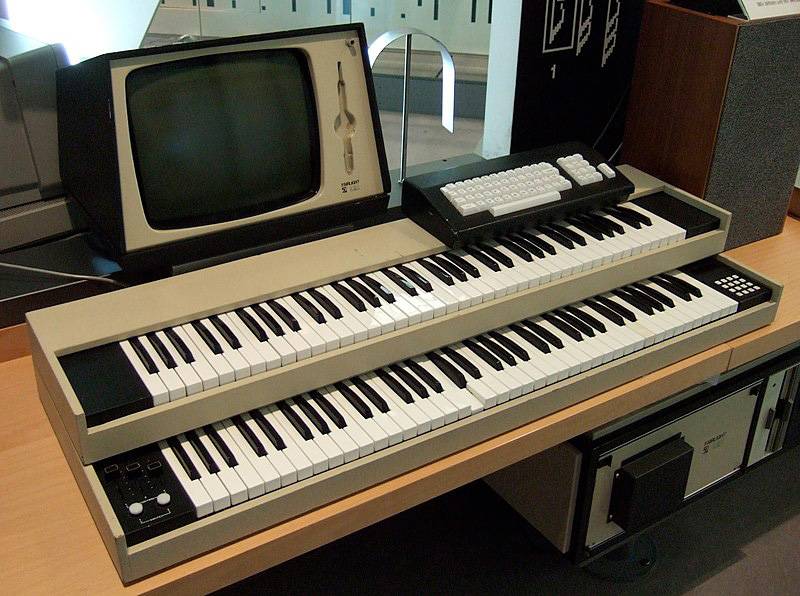
Fairlight CMI, public domain (via Wikipedia)
■ From Sampling to Combo Organs
Sampling technology played a crucial role in simulating the Hammond organ. By sampling each individual tonewheel of the Hammond, the sound was adapted for use in combo organs.
However, at the time, sampling technology was still developing, and it was impossible to sample the entire range of the organ’s sounds. Due to limited memory capacity, a single sampled sound often had to cover several notes. This constraint made full and accurate reproduction difficult.
As technology advanced, memory capacity expanded, allowing for far more detailed sampling. Eventually, the quality improved to the point where it became difficult to distinguish between a real Hammond organ and a simulated one just by listening. The same level of realism was achieved with Leslie speaker simulators as well, and the sound quality continues to be refined to this day.
■ The Surge of Combo Organ Releases in Japan
In Japan, companies like Suzuki Musical Instruments and Roland began releasing combo organs that emulated the Hammond organ. Suzuki's XK series and Roland's VK series are two notable examples. Both companies equipped their models with features that closely mimicked the Hammond, including nine drawbars and Leslie speaker simulators.
I personally used Suzuki's XK-1, and I remember being impressed by how close the sound came to the real Hammond organ. At around 12 to 13 kilograms, it was incredibly lightweight compared to the bulky models of the 1970s, making it much more practical to use.
I also had the chance to use Roland's VK series in rental studios, and the sound quality was excellent. Roland’s Leslie simulator included an innovative feature where you could control the tremolo by blocking a sensor on the panel with your hand or face, which I found extremely useful. In terms of weight, it was about the same as the Suzuki models.
However, even at 12-13 kilograms, it was still a bit heavy for someone like me with a bad back. I had to rely on a lightweight trolley to transport the organ to studios, but moving it was often a challenge. The organ would sometimes tilt while being tied to the trolley, making transportation quite difficult.
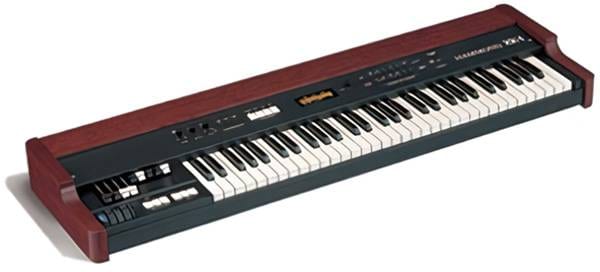
Hammond XK-1, (image source: Suzuki Musical Instruments website )

Roland VK-8, (image source: Roland website)
■ Nord: A Brilliant Choice
Frustrated with the weight of previous organs, I decided to look for a lighter combo organ, which led me to purchase the Nord Electro 4D (pictured is the Nord Electro 6D, with very similar appearance). This Swedish-made combo organ was nothing short of amazing. Not only did it deliver excellent organ sounds, but its acoustic piano and Oberheim-style synthesizer sounds were equally impressive. It even came with a keyboard split function. Weighing in at under 8 kilograms, it was incredibly portable.
What stood out most was its ability to cut through a band's mix, even when competing with loud guitars. The Electro 4D’s sound projection was fantastic, making it an ideal instrument for live performances.
While the 4D was near-perfect, its split function was limited to the organ sounds only, meaning I couldn't split between synths or electric pianos. That feature became available starting with the Nord Electro 5D.
NORD / NORD ELECTRO 6D 61 Combo Keyboard
■ Yamaha’s Long Silence
While other companies were actively releasing Hammond organ simulation instruments, Yamaha remained notably quiet. In 2015, Yamaha finally broke their silence with the release of the *reface* series, introducing the *reface YC*, a mini-keyboard focused on organ sounds. This model featured an organ flute sound engine but did not rely on sampling technology. It offered a range of organ sounds, including Hammond-like, Farfisa-like, Ace Tone-like, and Yamaha YC-style sounds. However, it came with mini keys instead of a full-size keyboard, leaving those looking for a more traditional setup still waiting.
Despite its mini keys, the reface YC produced excellent sound quality, good enough for professional use, with a high-quality build and very responsive keys. I still own this model, and it remains a reliable part of my setup.
Finally, Yamaha was preparing to release a full-size keyboard model dedicated to organ sounds. The real star was about to make its debut—the Yamaha YC61, which would bring a new era of organ simulation to the stage.
YAMAHA / reface YC Organ Modeling Synthesizer
The “sound & person” column is made up of contributions from you.
For details about contributing, click here.





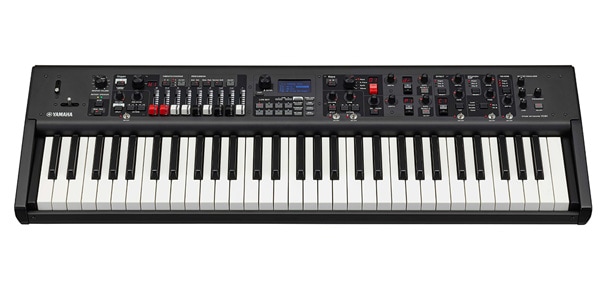
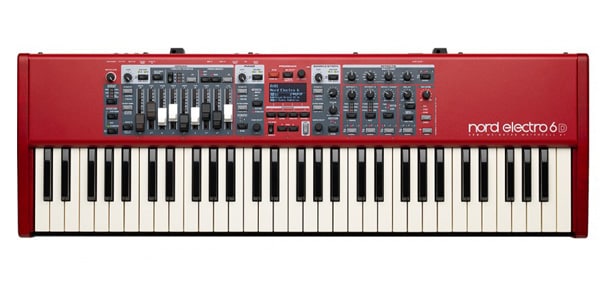
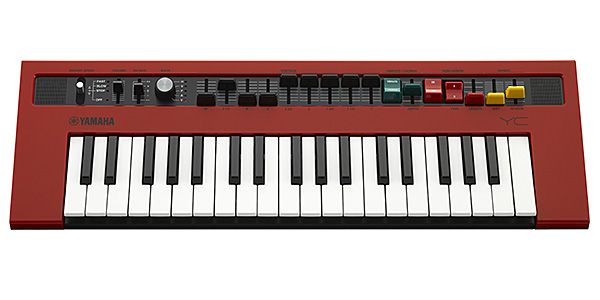



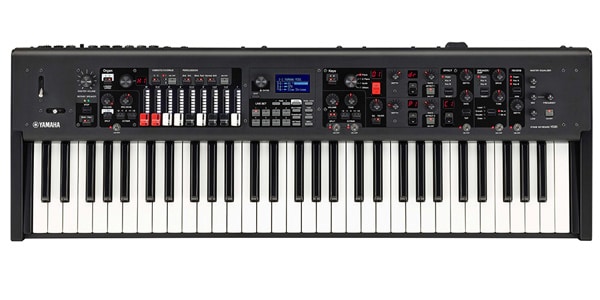





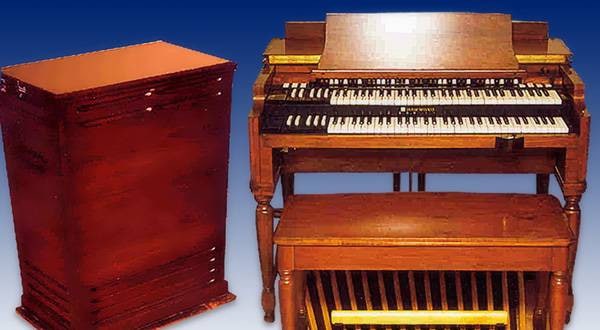


![[2025 Latest Edition] Choosing a Synthesizer/Popular Synthesizers Ranking](/contents/uploads/thumbs/2/2022/9/20220916_2_19446_1.jpg)


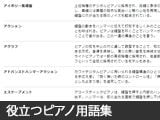 自分にあったピアノを選ぼう!役立つピアノ用語集
自分にあったピアノを選ぼう!役立つピアノ用語集
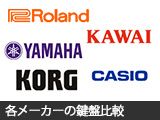 各メーカーの鍵盤比較
各メーカーの鍵盤比較
 まずは弾いてみよう!楽譜の読み方
まずは弾いてみよう!楽譜の読み方
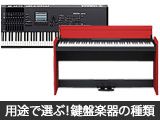 用途で選ぶ!鍵盤楽器の種類
用途で選ぶ!鍵盤楽器の種類
 キーボードスタートガイド
キーボードスタートガイド
 キーボード・ピアノ講座
キーボード・ピアノ講座















